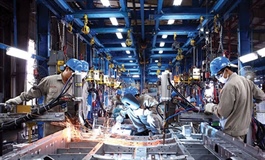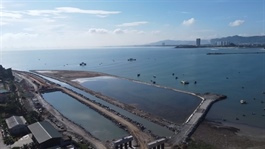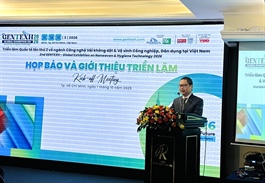Data the core means of production across sectors
Data the core means of production across sectors
Green data centres are being called the launchpad for Vietnam’s drive towards innovation, competitiveness, and sustainable growth in the digital era.

The global data centre sector continues to expand at around 15 per cent each year, Photo: Shutterstock |
At the Vietnam Digital Infrastructure Development Forum held last week in Hanoi, Nguyen Thi Ngoc Dung, chief of office at the National Data Association, said that Vietnam is entering a decisive phase of its digital transformation and enactment of the Data Law and the Personal Data Protection Law marks a strategic step to turn data into national strength while ensuring security and ethics.
“Data is no longer simply the ‘new oil’ but has become the core means of production across every sector of the economy,” Dung said “We are committed to delivering on seven central missions, with three pillars in particular: standardising the national data architecture, developing technology platforms owned and controlled by Vietnamese entities, and building a high-quality workforce through the launch of the Global Data Expert Network.”
Dung pointed to several issues that could slow progress, ranging from digital and energy infrastructure to macro policy gaps, talent shortages, and a still-nascent data market.
“There will be turning points that determine our destiny. But with the Party’s leadership, and the will of businesses, experts, and people, we will reach the finish line: a Vietnam that masters digital infrastructure, strategic technologies, and its own data future,” Dung added.
Professor Ho Tu Bao of the Vietnam Institute for Advanced Study in Mathematics highlighted that Vietnam’s digital future rests on technology, data, and applications. He observed that progress has been most visible in technical infrastructure, especially in connectivity and hardware, yet the other pillars lag behind.
“Data infrastructure, while advancing with national data centres and sectoral databases, continues to face architectural bottlenecks that slow down integration and prevent the creation of a seamless ecosystem,” he said. “Application infrastructure remains the weakest link as it is still shallow, lacking depth, and not sufficiently tied to core technologies that could move Vietnam from surface-level adoption to genuine innovation.”
Enterprises, both domestic and international, are already responding. VNPT outlined its ambition to lead the way with 5G, the cloud, AI, and blockchain. CMC Telecom presented a dual approach such as CMC Cloud, a Vietnamese platform designed to reinforce digital sovereignty’ and CMC Comprehensive Security Platform, an AI-powered suite intended to shift enterprise defence from reactive to proactive.
Global corporations at last week’s event also offered strategies on AI infrastructure, proposed positioning Vietnam as ASEAN’s next AI hub, introduced Wi-Fi 6 GHz to bridge the digital divide, and highlighted stringent data security requirements for hyperscale data centres.
Behind these opportunities lies a critical question about sustainability. The global data centre sector continues to expand at around 15 per cent annually, yet demand is outpacing this growth. ABB forecasts that data centres already account for 1–2 per cent of global electricity consumption, potentially rising to 3–4 per cent by 2030. The sector also faces scrutiny for high water consumption, CO2 emissions, and e-waste.
Nguyen Xuan Hoa, global market director for Compact Substation Products at ABB said, “Sustainability across the data centre ecosystem is critically important. Data centres must balance energy efficiency and energy costs with growing demand, scalability, and uptime.”
ABB’s response places efficiency and design at the centre of sustainability. The company advises that using the newest and most energy-efficient equipment will support more sustainable operations. Its HiPerGuard MV UPS, for instance, achieves up to 98 per cent efficiency at loads from 50 to 100 per cent, is scalable up to 25MW, and has a 15-year design lifespan with up to 10 years between intrusive maintenance.
As of 2025, Vietnam counts over 80 million internet users. With the deployment rate of Internet Protocol 6.0 exceeding 60 per cent, the country ranks second in ASEAN and ninth globally.
According to the VNCDC 2024 Report, Vietnam’s cloud computing market reached $775 million in 2024, and is projected to grow to $1.24 billion in 2025 and double that by 2029.
In parallel, data centre capacity is making rapid strides, from 45MW in 2024 to an estimated 525MW in 2025 and nearly 1,000MW by 2030. Colocation service revenues are also expected to hit $1.4 billion by the end of the decade.
- 09:00 06/10/2025
























